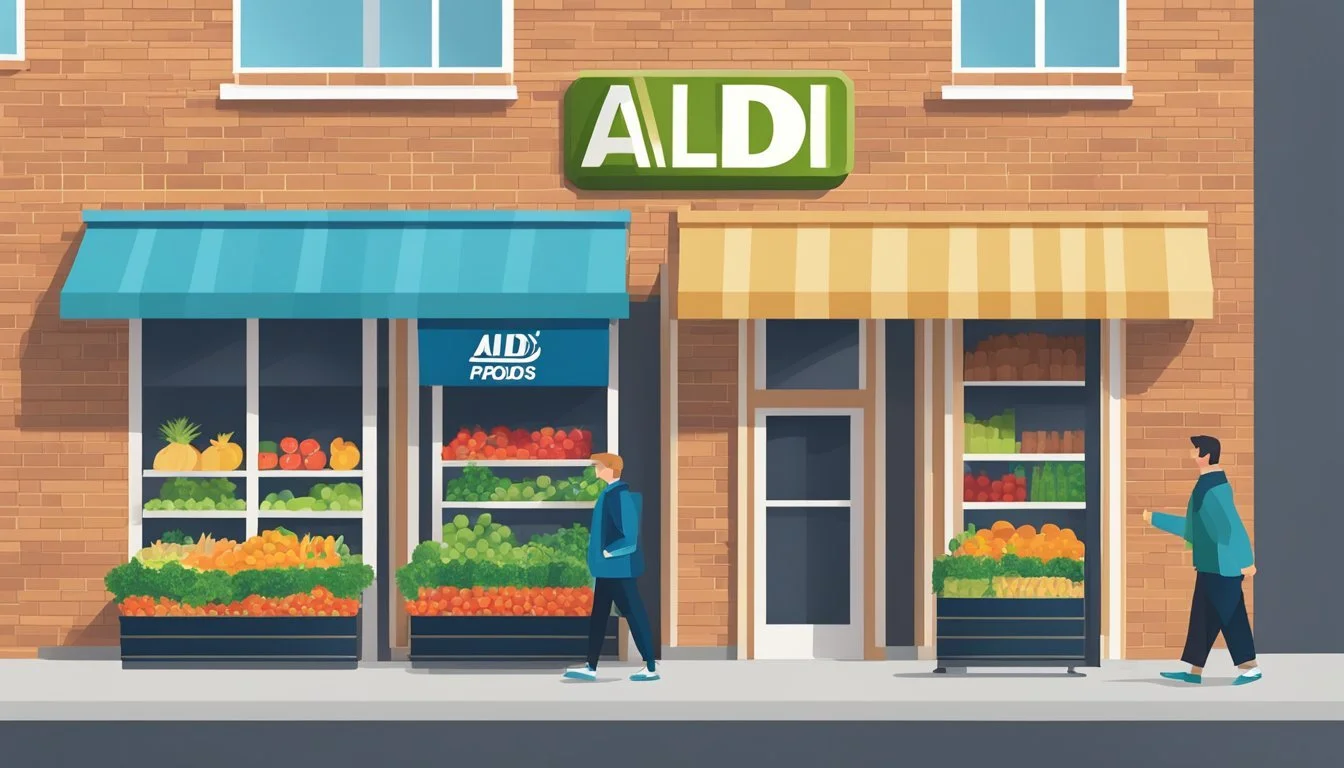Is Aldi Cheaper Than Whole Foods?
Analyzing Grocery Pricing Strategies
Part of Our Grocery Store Guide with Details on Aldi Prices and Whole Foods Market Prices
When comparing grocery shopping options, consumers often consider a variety of factors such as price, quality, and product selection. Two popular grocery store chains that often come up in price comparisons are Aldi and Whole Foods. Aldi is known for its no-frills shopping experience and low prices, while Whole Foods, now owned by Amazon, has a reputation for higher-priced goods with a focus on organic and high-quality offerings. Shoppers looking to balance their budgets against their dietary preferences may find themselves weighing these two options.
Recent studies and price checks reveal that Aldi often offers lower prices compared to Whole Foods. An analysis of a range of products, including produce, meat, and packaged foods, consistently shows that Aldi's pricing model tends to skew lower than Whole Foods by a noticeable margin. For example, shoppers have found that a package of organic avocados or baby spinach can be more economically purchased at Aldi than at Whole Foods. These price differences hold significance for consumers seeking to get the most value out of their grocery budgets.
While Aldi's lower prices are an attractive draw for cost-conscious shoppers, Whole Foods appeals to those prioritizing organic and specialty products. The latter's focus on quality and diet-specific offerings such as vegan, gluten-free, and non-GMO products caters to a particular market segment. Thus, consumers' choice between Aldi and Whole Foods may not rest solely on pricing but also on the types of goods they seek and the importance they place on factors such as organic certification, dietary needs, and product sourcing transparency.
Comparing Pricing Strategies
The strategic approaches of Aldi and Whole Foods in pricing their products are distinctly different, reflecting their unique brand philosophies and market positioning. Aldi focuses on cost-saving measures while Whole Foods prioritizes quality with a mindset often described as 'whole paycheck', which implies higher prices for premium products.
Aldi's Cost-Saving Measures
Aldi maintains low prices by implementing a variety of cost-saving strategies. They keep store designs simple and efficient, which reduces overhead costs. Bulk purchasing and a predominantly private-label stock also contribute to substantial savings for consumers. By selling items directly from their shipping cartons, maintaining a smaller selection of products, and encouraging customers to bag their own groceries, Aldi is able to keep staffing and operational costs low.
Store Efficiency: Compact store design with minimalistic interior.
Product Selection: Limited variety of mostly private-label brands.
Operational Savings: Customers bag their own items; items are displayed in shipping boxes.
Whole Foods' Pricing and Quality Focus
Whole Foods' pricing strategy is more aligned with its emphasis on quality and organic products, often sourcing from local and artisanal producers. They cater to a customer base that is willing to pay a premium for items that are organic, non-GMO, or sustainably farmed. While their prices have been perceived as higher, the acquisition by Amazon led to price cuts on various items, attempting to shed the 'whole paycheck' image and offer savings on some products without compromising quality.
Quality Focus: High-quality, organic and specialty products.
Local Partnerships: Items sourced from local and boutique producers.
Amazon Integration: Selected price reductions since Amazon's acquisition.
These pricing strategies reflect each retailer’s commitment to specific values, either saving money for the customer or offering a higher-end shopping experience.
Assortment and Product Selection
When comparing Aldi and Whole Foods, a significant difference lies in their product assortment and selection. Aldi offers a streamlined array of mostly private-label brands, while Whole Foods provides a diverse range of products, including premium and organic options.
Aldi's Product Range
Aldi operates on a model of efficiency that includes a limited product assortment, focusing primarily on store brands. The selection is carefully curated to offer customers a variety of essential categories such as meats, dairy, and bread. Within these categories, Aldi has a smaller yet high-quality selection, often with an emphasis on affordability. While Aldi does offer organic products, the variety is less extensive than at Whole Foods. Their private label items dominate the shelves, ensuring lower prices but fewer national brand options.
Categories Offered: Meats, Dairy, Bread
Organic Availability: Available but limited
Dominant Brands: Private label
Whole Foods' Premium Options
Whole Foods, conversely, provides a broad selection of organic products, catering to a clientele that values a wide variety of organic food options. The store prides itself on its vast assortment of categories, from organic meats to dairy, bread, and beyond. Customers have access to a rich selection of both store brands and national brands. Whole Foods has built a reputation on supplying a multitude of premium organics and a wide selection of national and private-label products that often come at a higher price point than Aldi.
Categories Offered: Extensive range including meats, dairy, bread, and more
Organic Availability: Extensive variety of organic options
Brand Diversity: Mix of premium national and private label brands
By focusing on a limited assortment, Aldi keeps costs low and streamlines the shopping experience. Whole Foods, on the other hand, offers consumers a comprehensive selection of premium, organic, and specialty items, justifying higher prices with a broader variety.
Private Labels vs. National Brands
When comparing Aldi and Whole Foods, the key distinction lies in their inventory composition, particularly their use of private labels versus national brands. Aldi primarily stocks its exclusive brands, while Whole Foods balances its offerings with name-brand products and its own private labels, such as the 365 Everyday Value line.
Aldi's Exclusive Brands
Aldi distinguishes itself in the grocery market with a strong focus on its private-label brands, which account for the majority of its product offerings. This strategy allows Aldi to maintain low prices across its stores, leading to significant savings for customers. For example, Aldi's brands do not involve third-party marketing costs, which often contributes to the higher prices of national brands. Consumers may not find familiar national brands on Aldi's shelves, but they have a wide selection of store brands that promise comparable quality at a lower cost.
Whole Foods and Name-Brand Offerings
While Whole Foods is renowned for its high-quality organic and natural products, its inventory includes both private labels and national brands. This provides consumers with a broader range of choices. The store's private-label brand, 365 Everyday Value, is designed to be more affordable yet maintains the standard of quality that customers expect from Whole Foods. Whole Foods' acquisition by Amazon has led to the introduction of more cost-effective options to compete with discount grocers, balancing the higher-priced name-brand products that are synonymous with Whole Foods' premium shopping experience.
Organic and Non-Organic Produce
When comparing Aldi and Whole Foods, consumers will find significant differences in price and selection between the stores' organic and non-organic produce offerings.
Aldi's Freshness and Affordability
Aldi's philosophy centers around providing affordable grocery options, which extends to their organic and non-organic produce. Fruit offerings, such as non-organic blueberries, are priced competitively, with Aldi being notably cheaper than Whole Foods. For example, shoppers could find Aldi's non-organic blueberries priced considerably lower than their organic counterparts at other stores.
Organic baby spinach: Aldi often has a lower price point, offering a five-ounce package at around $2.49.
Aldi's focus on fresh produce is evident in both their organic and non-organic options, enabling consumers to access fresh vegetables and fruits at a lower cost than many competitors.
Whole Foods' Quality and Variety
Whole Foods has long been synonymous with a wide array of organic products. The store has a robust selection of both organic and non-organic produce, catering to a variety of preferences and dietary needs. They often provide a broader range of organic produce items, which may come at a premium price when compared to Aldi.
Organic fruits and vegetables: Price per ounce for organic items like blueberries can be similar to Costco, but higher than Aldi.
Whole Foods is also known for its 365 organic brand, which offers customers a quality, store-brand option that is generally more affordable than other name-brand organic products, but still typically at a higher price point than Aldi's offerings.
Pricing Analysis and Comparison
When examining the pricing dynamics between Aldi and Whole Foods, the focus tends to be on the affordability of Aldi against Whole Foods' premium positioning. This section dissects the cost of common grocery items and draws a comparison through a structured chart analysis.
Cost Breakdown of Common Groceries
Aldi is known for its cost-effective strategy, which is evident in the prices of everyday items. For instance, milk reveals a noticeable difference in costs with Aldi often charging less than Whole Foods. Similarly, for organic bananas, Aldi's prices are typically lower, making it an appealing choice for budget-conscious consumers. The price of strawberries and eggs also follows this pattern, where Aldi's prices are more affordable compared to those at Whole Foods. With regards to seafood and chicken, Aldi generally offers lower prices, but it's important to consider the variety and quality differences that might justify Whole Foods' higher price tag.
Ground turkey and white bread symbolize staple items that maintain Aldi's reputation for having lower prices. Canned goods and olive oil are pantry essentials where Aldi's pricing strategy further accelerates its position as a budget-friendly option. Conclusively, even with products like whole milk and pineapples, Aldi's pricing is more aligned with cost-saving, whereas Whole Foods tends to carry a premium because of its focus on quality and organic offerings.
Comparative Shopping Chart Analysis
Here is a brief chart outlining price distinctions for selected grocery items at Aldi and Whole Foods. Prices for Aldi are derived from observed trends and may vary based on location and sales:
Grocery Item Aldi Price Whole Foods Price Organic Avocados (4 pack) $4.29 $4.99 Organic Baby Spinach (5 oz.) $2.49 N/A Organic Blueberries (per ounce) $0.58 $0.50 Milk Typically lower Higher Bananas Typically lower Higher Strawberries Typically lower Higher Eggs Typically lower Higher Seafood Typically lower Higher Pineapple Typically lower Higher Chicken Typically lower Higher Ground Turkey Typically lower Higher White Bread Typically lower Higher Canned Goods Typically lower Higher Olive Oil Typically lower Higher Whole Milk Typically lower Higher
The analysis reflects that Aldi consistently maintains lower prices for basic grocery items compared to Whole Foods. Shoppers who prioritize price will find Aldi to be the more economical option, while those who focus on organic products and broader selections may find the pricing at Whole Foods justifiable.
Convenience and Store Experience
When comparing the convenience and store experience of Aldi and Whole Foods, customers should consider the distinctive approaches each grocery chain takes regarding location, layout, and focus. These factors significantly influence their shopping experience.
Shopping at Aldi
Aldi stores are strategically located to serve customers seeking value. These stores are typically smaller than a traditional supermarket, which translates to a simplified layout with fewer choices. Aldi focuses on providing a no-frills shopping environment where products are often displayed in their original shipping boxes to reduce restocking time and costs. The store's layout is designed to facilitate a quick shopping experience, allowing customers to efficiently find everything on their shopping list. Aldi's strategy comprises a lean selection primarily composed of store brands valued for their affordability.
Store Layout: Streamlined and straightforward
Product Focus: Store-brand merchandise emphasizing value
Customer Experience: Efficient, hassle-free shopping
Experience at Whole Foods
Whole Foods, an Amazon-owned chain, cultivates a distinctly different shopping environment from Aldi. Located often in urban areas and affluent suburbs, Whole Foods caters to customers who prioritize organic and locally sourced products. The stores are spacious and thoughtfully curated, offering a wide range of healthier food choices. The focus on quality extends to an elevated shopping atmosphere with aesthetically pleasing displays and a plethora of options, making it a more time-intensive experience for discerning customers.
Store Layout: Expansive with emphasis on presentation
Product Focus: Organic, locally grown, and high-quality goods
Customer Experience: Engaging and detail-oriented shopping
Demographics and Market Position
The demographics and market position of Aldi and Whole Foods reveal contrasting strategies, with Aldi focusing on cost efficiency to attract a broad customer base while Whole Foods targets a more specific demographic interested in premium and organic products.
Aldi's Target Audience
Aldi's customer base largely consists of price-conscious shoppers seeking value for money without a significant emphasis on brand names or organic credentials. Aldi appeals to a wide demographic by offering affordable options, which include both generic labels and occasional premium items. Competing directly with both discount and mainstream grocery chains, Aldi's low-cost approach has enabled it to gain a robust market share in the competitive grocery sector.
Aldi Customer Demographics:
Income Level: Typically middle- to lower-income households
Purchasing Habits: Prioritize savings, deals, and generic brands
Competition: Mainly discount and mainstream grocery stores
Whole Foods' Consumer Base
Whole Foods Market has positioned itself distinctly in the grocery retail sector by focusing on health-conscious consumers who prioritize organic and natural products, even if it means a higher price point. This demographic typically includes millennials and Generation X shoppers who are willing to spend more on food perceived as healthier or ethically sourced. Whole Foods' competitive landscape includes other organic and health-focused retailers, but Amazon's acquisition has broadened its reach.
Whole Foods Customer Demographics:
Income Level: Often higher-income households that value quality and health aspects
Purchasing Habits: Prefer organic, non-GMO, and sustainably sourced products
Competition: Primarily other organic and premium grocery retailers
Cost-Saving Strategies for Shoppers
When aiming to stretch the grocery budget, shoppers can employ strategic approaches to garner savings at both Aldi and Whole Foods, each store offering unique ways to save. Understanding each store's cost-saving measures enables consumers to make informed shopping decisions to keep expenses low.
Maximizing Savings at Aldi
Aldi's reputation as a budget grocery store stems from its focus on low prices across shopping categories. Shoppers can further reduce their expenses by prioritizing Aldi's private label items, often significantly cheaper than brand-name equivalents. Here are quick, actionable steps:
Weekly Ads: Check Aldi's weekly ads for the latest deals and plan meals around what's on sale.
Aldi Finds: Limited-time specialty items, known as Aldi Finds, offer seasonal goods at a discount.
Bulk Purchases: Buying staples in bulk can lead to long-term savings.
Additionally, Aldi keeps its operational costs low, which translates into savings for the customer. They accept only cash, debit, or EBT to avoid credit card fees, use a cart rental system to reduce the need for staff, and display products in their shipping boxes to cut stocking time.
Finding Deals at Whole Foods
Whole Foods, often perceived as a higher-priced retailer, provides opportunities for savings through strategic shopping. Customers should focus on:
365 by Whole Foods Market: Purchasing Whole Foods' own 365 brand can yield lower prices compared to other brand-name organic products.
Seasonal Produce: Buying in-season fruits and vegetables usually comes at a lower cost and with better quality.
Shopping Strategy Description Potential Savings Digital Coupons Use the Whole Foods app to access digital coupons. Discounts on select items Prime Membership Amazon Prime members receive special deals and an extra 10% off sale items. Various savings based on deals
Whole Foods also offers "Prime Member Deals" where Prime members can unlock additional savings on certain products each week. Understanding Whole Foods’ discount programs and membership perks is key for customers looking to save money.
Impact of Competition and Alternatives
In the landscape of grocery retail, Aldi's model of cost efficiency provides a notable contrast to Whole Foods' premium-focused approach. This has repercussions on consumer choices and the strategies competitors employ in carving market share.
Aldi vs. Walmart and Costco
Aldi has carved out a market niche by offering a wide range of private-label products, which often results in lower prices than its competitors. For instance, in a side-by-side comparison, consumers might find antibiotic-free chicken at Aldi priced at $4.29 a pound, whereas similar options at Walmart might differ in cost due to Walmart's different brand dynamics.
Walmart's strategy involves a more extensive selection of both name-brand and store-brand products aimed at providing a one-stop shop experience.
Costco, on the other hand, competes by offering bulk purchasing options, potentially reducing the unit price of items but necessitating a larger upfront expenditure.
Grocery Store Price Strategy Product Strategy Aldi Low-cost private-label Curated selection for efficiency Walmart Competitive pricing mix Broad selection including name-brand products Costco Membership-based bulk sales Large quantity bulk items, limited selection
Whole Foods and Other High-End Grocers
Whole Foods caters to a different market segment compared with Aldi. It emphasizes organic products and a premium shopping experience. For example, a pack of four organic avocados at Aldi could cost $4.29 while the same at Whole Foods might be priced slightly higher at $4.99, reflecting Whole Foods' positioning as a purveyor of higher-end goods.
Competitors like Kroger and Target have sought to balance cost and quality by expanding their own lines of organic products, thereby providing a middle ground between Aldi and Whole Foods.
The presence of alternative grocers impacts Whole Foods by encouraging competitive pricing, while also providing consumers with a spectrum of options to fit diverse grocery shopping preferences and budgets.
High-End Grocer Market Position Key Differentiator Whole Foods Premium organic products Focus on quality and an upscale experience Kroger Balanced value and quality Wide range of options including organics Target Affordable quality products Accessible, fashion-forward store experience
The competition between these diverse grocery store models ultimately offers consumers a range of options to maximize their grocery budgets and tailor their shopping experience to their preferences.
Consumer Perception and Brand Image
Consumer perception significantly influences the marketplace, particularly in the grocery industry where Aldi and Whole Foods have cultivated distinct brand images around pricing and quality.
Aldi's Reputation for Low Prices
Aldi has positioned itself as a leader in everyday low prices focused on cost-saving strategies that are reflected in its no-frills shopping experience. They offer a range of products, including store-brand alternatives, which typically offer consumers savings when compared to national brands. This commitment to affordability has earned Aldi the reputation of providing low prices without compromising on quality.
Whole Foods as a Premium Retailer
In contrast, Whole Foods has established itself as a premium retailer, prioritizing high-quality, natural, and organic products. Nicknamed "Whole Paycheck," Whole Foods often has higher prices that align with its focus on quality and selection. Customers choose Whole Foods for their wide variety of organically grown and locally sourced products, accepting the premium they pay as a trade-off for their dedication to health-conscious foods and environmental standards.
Conclusion
When comparing Aldi and Whole Foods, price emerges as a key differentiator. Aldi is renowned for their cost-effectiveness, often presenting lower price points on many items. For instance, a package of organic avocados is typically cheaper at Aldi than at Whole Foods. This affordability extends to their "Simply Nature" organic label, which provides a range of organically-grown produce at competitive prices.
Quality is a priority for both grocery stores, with each offering an array of organic and non-GMO options. Whole Foods is often associated with high-quality produce and a wide variety of health-centric products. Yet, Aldi also places emphasis on quality, particularly within their organic line.
Savings are evident for shoppers who choose Aldi due to their streamlined operations and no-frills shopping experience. In contrast, Whole Foods, often known for its higher price tags, has made efforts to reduce costs for consumers, especially after being acquired by Amazon.
In summary, shoppers looking for the best value without compromising on quality have strong reasons to consider Aldi. However, those who prioritize a broader selection of specialty items and a brand known for stringent quality standards may find Whole Foods aligns more with their preferences. Both grocery stores cater to a demographic seeking organic and health-conscious choices but differ in their approach to pricing and customer experience.









